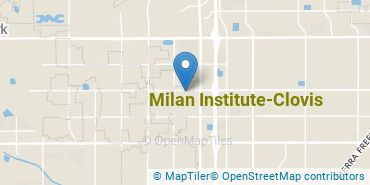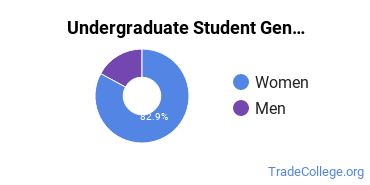Milan Institute-Clovis Trade Programs
Milan Institute-Clovis is a private for-profit institution situated in Clovis, California. The suburban atmosphere of Clovis makes it a great place for students who want the amenities of city life without actually living in the middle of a constant hustle and bustle.
Featured schools near , edit
Where Is Milan Institute-Clovis?

Contact details for Milan Institute-Clovis are given below.
| Contact Details | |
|---|---|
| Address: | 731 W Shaw Ave, Suite A, Clovis, CA 93612 |
| Phone: | 559-323-2800 |
| Website: | www.milaninstitute.edu |
Can I Afford Milan Institute-Clovis?
Student Loan Debt
It's not uncommon for college students to take out loans to pay for school. In fact, almost 66% of students nationwide depend at least partially on loans. At Milan Institute-Clovis, approximately 77% of students took out student loans averaging $5,550 a year. That adds up to $22,200 over four years for those students.
Milan Institute-Clovis Undergraduate Student Diversity
Gender Diversity
Of the 401 full-time undergraduates at Milan Institute-Clovis, 21% are male and 79% are female.

Racial-Ethnic Diversity
The racial-ethnic breakdown of Milan Institute-Clovis students is as follows.

| Race/Ethnicity | Number of Grads |
|---|---|
| Asian | 27 |
| Black or African American | 28 |
| Hispanic or Latino | 255 |
| White | 64 |
| International Students | 0 |
| Other Races/Ethnicities | 27 |
Milan Institute-Clovis Trade School Concentrations
The table below shows the number of awards for each concentration.
| Major | Basic Certificate | Undergraduate Certificate | TOTAL |
|---|---|---|---|
| Aesthetician/Esthetician & Skin Care Specialist | 303 | 0 | 303 |
| Barbering/Barber | 0 | 32 | 32 |
| General Cosmetology/Cosmetologist | 0 | 31 | 31 |
| Medical/Clinical Assistant | 8 | 0 | 8 |
| Massage Therapy/Therapeutic Massage | 0 | 0 | 0 |
| TOTAL | 311 | 63 | 374 |
References
*The racial-ethnic minorities count is calculated by taking the total number of students and subtracting white students, international students, and students whose race/ethnicity was unknown. This number is then divided by the total number of students at the school to obtain the racial-ethnic minorities percentage.
More about our data sources and methodologies.
Featured Schools
 Request Info
Request Info
|
Southern New Hampshire University You have goals. Southern New Hampshire University can help you get there. Whether you need a bachelor's degree to get into a career or want a master's degree to move up in your current career, SNHU has an online program for you. Find your degree from over 200 online programs. Learn More > |
